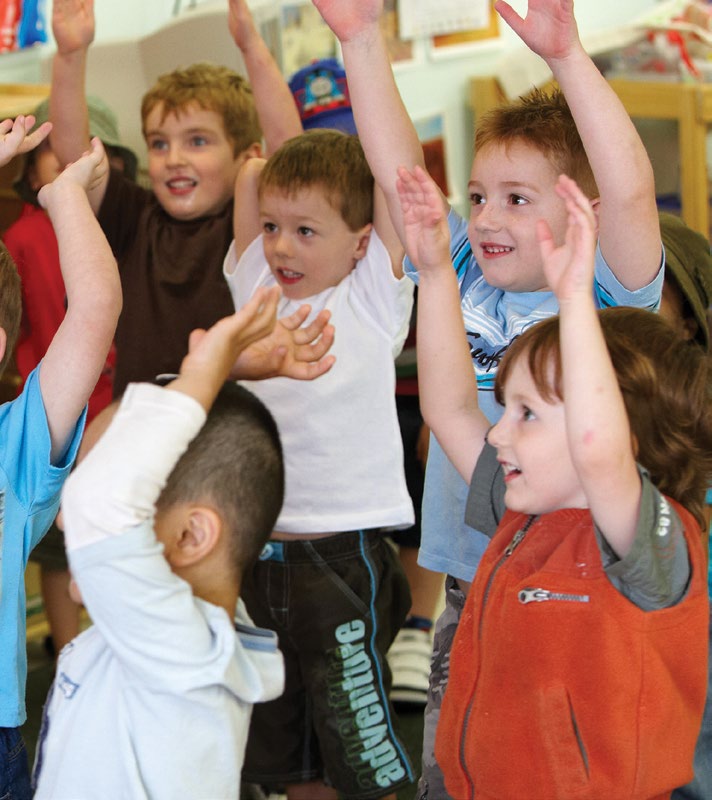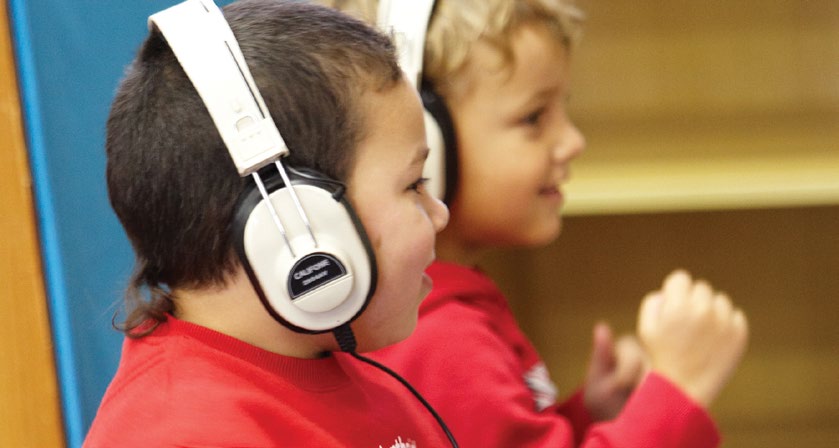Music in Language and Literacy Development
Child Development
The term child development refers to the progressive stages and the associated learning processes that children experience in various areas of a child’s growth. In Australia, the EYLF (AGDE, 2022) mandates educators to design nurturing environment that promotes cognitive, physical, social, emotional and language development. These areas of development are considered to be holistic by many scholars (e.g., Acker et al., 2024; Gardner, 2006; Smidt, 2013) because each dimension is interconnected. Music is an ideal medium to support such comprehensive developmental requirements of children, as discussed in the section on The basics of music.
Harvard research has also revealed that the early years are a period of rapid growth and development (National Scientific Council on the Developing Child, 2020; Tierney & Nelson III, 2009). This phase establishes the groundwork for an individual’s lifelong development and profoundly impacts their future (Salamon, 2011; Acker & Nyland, 2025). In light of this, it is crucial that early childhood facilitators enrich the language and literacy skills of preschool-aged children, including five-year-olds, to ensure a firm foundation for later life and meet the expectations outlined in the Australian educational frameworks.
An important point to acknowledge is that children’s progress in growth, learning and development will vary among individuals (AGDE, 2022). Such variations demand the implementation of strategic teaching methods and inclusive environments by educators that respond to the specific needs and learning preferences of each child. One of the most effective methods is incorporating music into early childhood education practices. Music offers a versatile and inclusive approach to address different learning requirements by accommodating different learning styles, developmental levels and emotional expressions, and by ensuring all children can engage, learn and grow in a supportive environment.
Language and Literacy Learning
Music provides valuable opportunities for children to enhance phonological awareness, vocabulary, and early literacy skills in a playful and meaningful manner. The cognitive connections between language and music, as observed by Hooper (2023), make music a potent resource for supporting language and literacy growth. The skills and understandings gained through musical experiences can significantly aid a child’s learning, from kindergarten through primary education and extending throughout life, as mentioned earlier. The following provides a detail discussion of key language and literacy skills that learners aged five can cultivate through active engagement with music, particularly in oral language, vocabulary acquisition and phonological awareness.
Oral Language
 Oral language proficiency includes the abilities to listen, speak and comprehend spoken language. Musical activities, such as singing, chanting, and musical storytelling, provide abundant opportunities for young learners to develop and refine these skills. For instance, singing and musical play activities inspire children to verbalise their thoughts and engage in expressive communication. They can enhance their ability to express themselves effectively through articulating words with clarity and experimenting with different vocal tones and pitches, with musical dialogues and role-playing offering chances to develop conversational skills in an engaging and nurturing setting. The repetitive elements of songs and rhymes can further help solidify sentence structures, pronunciations, and grammatical patterns, fostering the development of fluent speech (Ewing et al., 2016). Alongside its cognitive and emotional benefits, singing and even humming also support the physiological development of breath management and the fine-tuning of the facial and oral muscles necessary for speech (Dinham & Chalk, 2018).
Oral language proficiency includes the abilities to listen, speak and comprehend spoken language. Musical activities, such as singing, chanting, and musical storytelling, provide abundant opportunities for young learners to develop and refine these skills. For instance, singing and musical play activities inspire children to verbalise their thoughts and engage in expressive communication. They can enhance their ability to express themselves effectively through articulating words with clarity and experimenting with different vocal tones and pitches, with musical dialogues and role-playing offering chances to develop conversational skills in an engaging and nurturing setting. The repetitive elements of songs and rhymes can further help solidify sentence structures, pronunciations, and grammatical patterns, fostering the development of fluent speech (Ewing et al., 2016). Alongside its cognitive and emotional benefits, singing and even humming also support the physiological development of breath management and the fine-tuning of the facial and oral muscles necessary for speech (Dinham & Chalk, 2018).
Additionally, Lervåg et al. (2011) contend that oral language forms the basis for reading development and is therefore critical for a five-year-old on the verge of starting primary school. To support their literacy development, it is vital that children of five years are exposed to a rich oral language environment. Music, according to Dinham & Chalk (2018), enhances oral language development by strengthening auditory discrimination skills, particularly through pitch and rhythm, as well as by presenting rich and varied vocabulary, introducing words that children may not encounter in daily conversation.
Vocabulary
Vocabulary, in the context of five-year-old children, refers to the repertoire of words they can understand and use. At the age of five, vocabulary is essential, as it supports language development, improves communicative abilities, enhances reading and comprehension skills, and prepares the child for future academic achievement. In particular, reading acquisition and comprehension are inextricably linked to vocabulary knowledge, without which decoding letters into words becomes meaningless as the meaning of words is not known (Konza 2014). Music, especially songs, can introduce new vocabulary within meaningful contexts, helping children comprehend word meanings and pronunciations. For instance, movement-based musical activities, according to Hoover (2023), can provide a multisensory pathway for children to acquire and practise vocabulary, including body parts (e.g., Hokey Pokey), actions (e.g., If You’re Happy and You Know It), and spatial terms (e.g., Going on a Bear Hunt).
As previously noted, the repetition inherent in songs and rhymes facilitate the acquisition of new vocabulary. When children encounter words multiple times in a song, their capacity to remember and retrieve those words improves. Such recurring use of language enables children to experiment with word usage in different contexts, resulting in a refined understanding of how those words function. And the potential of lyrical music to immerse young learners in a wide and varied vocabulary can help them become highly skilled language users, capable of readily learning and retaining new words upon entering school (Catts et al., 2002).

Phonological Awareness
Phonological awareness is the ability to discern and manipulate the various sounds that constitute spoken language (Konza, 2014). Konza (2014) states that to acquire reading skills, young readers must develop the ability to recognise and relate sounds to spoken language. Such awareness of phonological structures is the foundation for students’ ability to decode letter-sound correspondences, which is a fundamental prerequisite for learning to read. It is oral language, with music as a contributing influence, that establishes the essential contexts, opportunities and tools for the development of phonological abilities. There is strong evidence that the use of music in early education can significantly contribute to phonological awareness skills, such as rhyming, syllable segmentation, blending and phonemic recognition (Degé & Schwarzer, 2011; Moritz et al., 2013). Hooper (2023) further adds that the intrinsic rhyming in lyrical music, including songs, supports phonological awareness as it prompts children to perceive and notice matching sounds in language.
Acknowledgement
We respectfully acknowledge the Wurundjeri People of the Kulin Nation as the traditional custodians of the land on which we learn and work. We honour their enduring spiritual, cultural and custodial connection to the land, water and community. Our deepest respect is given to the Elders, both past and present, and extends to all First Nations peoples and communities around the world.

